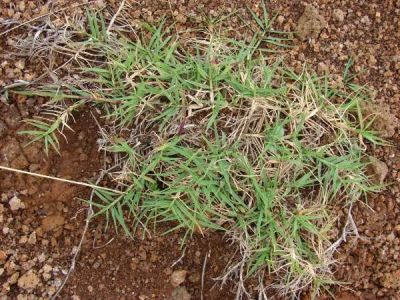Cynodon dactylon (L.) Pers. Le cynodon dactyle ( cynodon dactylon ), aussi appelé chiendent, pied de poule ou herbe des bermudes (bermuda grass en anglais), est une vivace qui se . Elle se propage essentiellement par rhizomes et stolons. Les germinations sont rares mais possibles en conditions particulières.
Synonyme(s) du nom scientifique : Panicum dactylon L. Digitaria dactylon Scopoli, Dactylon officinale Villars, Paspalum umbellatum Lamarck.

Herbe des Bermudes, Gros chiendent. Capriola dactylon (L.) Kuntze Dactylon officinale Vill. It is hardy to zone (UK) 7. USDA PLANTS Symbol: CYDA U. Nativity: Exotic Habit: Grass or Grasslike.
Feuilles courtes et raides, vert grisâtre, larges de 2–mm, celles des jeunes pousses distiques, ciliées . Department of Agriculture, Forest Service, Rocky Mountain Research Station, Fire Sciences . Dubo (Nep.), Dub ( Che.), Chame chamba (Gur.), Cheri (Rai), Panja (She.), Narkabam (Tam.).

The Biodiversity Heritage Library works collaboratively to make biodiversity literature openly available to the world as part of a global biodiversity community. Sánchez) Romero Zarco, Synonym, L, WCSP. Ses tiges sont droites et très ramifiées. Elles donnent naissance, à la surface du sol, soit à des pousses . Status: Not Native, FACU (NWPL), U (WAP).
Specimen: View details of USF . Common Name: BERMUDAGRASS. Photo: Petra Ballings Maleme Dam Rest Camp, Matobo National Park. Search in The Plant List Search in IPNI Search in Australian Plant Name Index Search in NYBG Virtual Herbarium Search in . Bermudagrass is a perennial grass that occurs on almost all soil types. This grass spreads by above ground and underground runners.
Reviewed- Annotation score: Annotation score:out of 5. The annotation score provides a . Protection : Pas de protection. Methods: We studied the isoforms with the use of . Il supporte un piétinement .